Today, animals belonging to the genus Panthera (the big cats) are regarded as the kings of nature. Lions, tigers, leopards, and snow leopards are all species in this genus. However, millions of years ago, the title of “king of all species” belonged to the Machairodontinae – the subfamily of saber-toothed cats.
The saber-toothed subfamily dominated the world for over 10 million years and was the top predator across five continents. Species of the genus Panthera at this time had to yield to the powerful dominance of saber-toothed cats, playing a subordinate role as predators compared to them and avoiding direct competition.
However, over time and through evolution, to gain more living space, species of the genus Panthera began to compete directly with saber-toothed cats time and again, with the leopard being the pioneer in this battle, shaking the supremacy of the saber-toothed subfamily.
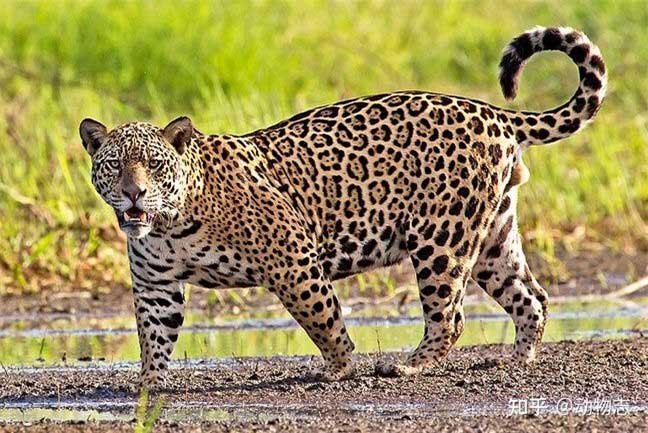
Leopard.
Dr. Jiang Zuoqigao, a graduate of the Institute of Paleobiology and Vertebrate Paleontology at the Chinese Academy of Sciences, has studied leopards for many years. He discovered that although modern leopards primarily live in Latin America, their ancestors once spread across all five continents, and the reign of leopards lasted for 2 million years.
Where did this reign originate, why did it thrive, and why did it decline?
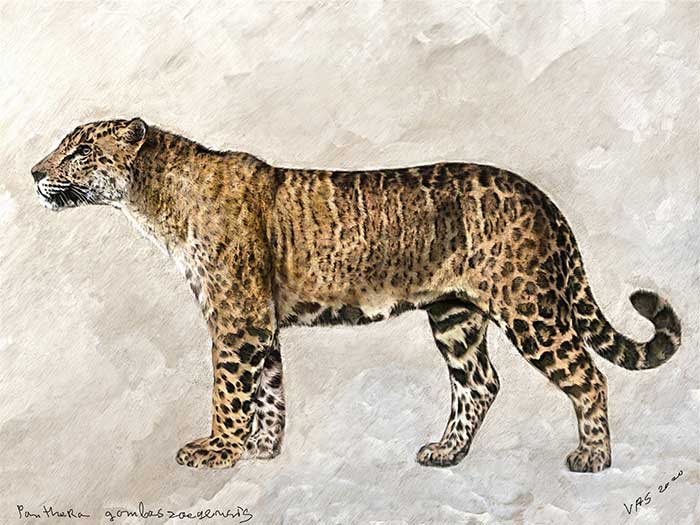
Panthera gombaszoegensis (European Leopard) lived in Europe about 1.5 million years ago and is the earliest known Panthera species from Europe. The first known fossils were found at the Olivola site in Italy and are synonymous with Panthera toscana from other locations in Italy. Subsequently, specimens were found in England, Germany, Spain, France, and the Netherlands.
Although modern leopards currently live in Latin America, their original origins trace back to Africa.
The original leopard species, named Panthera gombaszogensis, had its earliest fossils discovered in South Africa, dating back 1.9 million years.
The cooler climate during the early Pleistocene created more open grasslands and opened migration corridors for animals. The Gambazog leopard seized this opportunity to migrate northward, marking the first time leopards stepped out of Africa – around 1.8 million years ago, appearing in Western Asia and Southern Europe, establishing a “leopard dynasty” spanning three continents: Asia, Europe, and Africa.
The Gambazog leopard was slightly larger than modern leopards, weighing between 80 and 120 kg, while modern leopards weigh between 50 and 100 kg.
However, upon entering Europe, their first challenge was the saber-toothed subfamily.
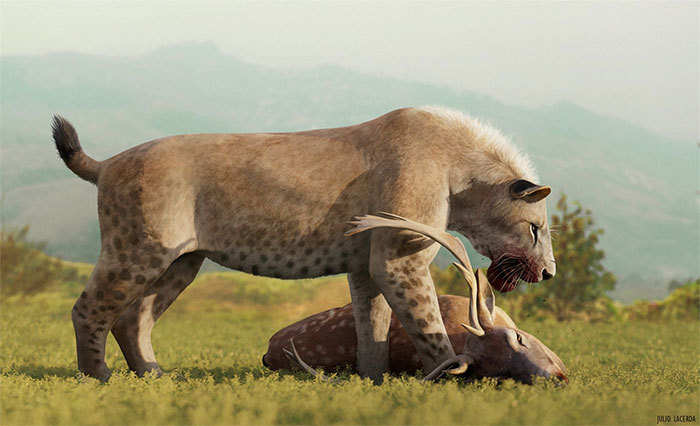
Homotherium.
The saber-toothed subfamily dominating Europe at that time included: Homotherium, weighing 100 to 200 kg, and Megatereon weighing 80 to 140 kg, primarily preying on large herbivores.
Thus, as the Gambazog leopard began to enter Europe, it operated as a secondary predator, targeting smaller ungulates than those preyed upon by the two aforementioned species, such as deer and small horses, thereby avoiding direct competition with saber-toothed cats in the early period.
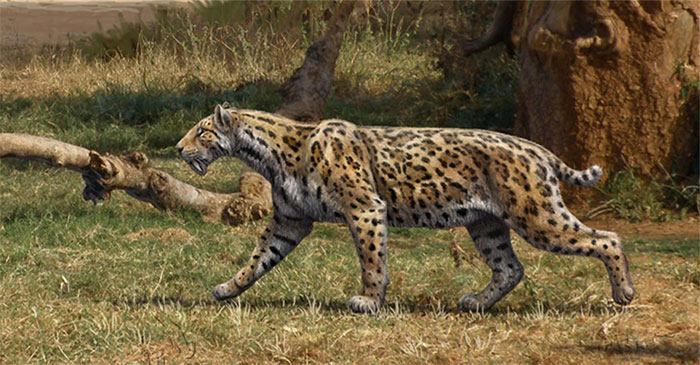
Megatereon.
This wise ecological strategy helped the Gambazog leopard become the most common big cat in Europe at the beginning of the Pleistocene.
Next, the Gambazog leopard continued to expand its range eastward into Europe and Western Asia. Recent research by Dr. Jiang Zuo on fossils in South Asia indicates that the Gambazog leopard reached South Asia about 1.4 million years ago, becoming the most common leopard species during this period.
However, to date, there is no evidence of this leopard species appearing in East Asia. According to incomplete fossil records in East Asia, this leopard species was unsuccessful in penetrating East Asia, instead only spreading to the fringes of East Asia.
The successful entry of leopards into Europe was due to the fact that at that time, Europe had no leopards, while in East Asia, the period was when Panthera palaeosinensis (ancient Chinese tiger) was rising strongly, leaving no opportunity for competition.
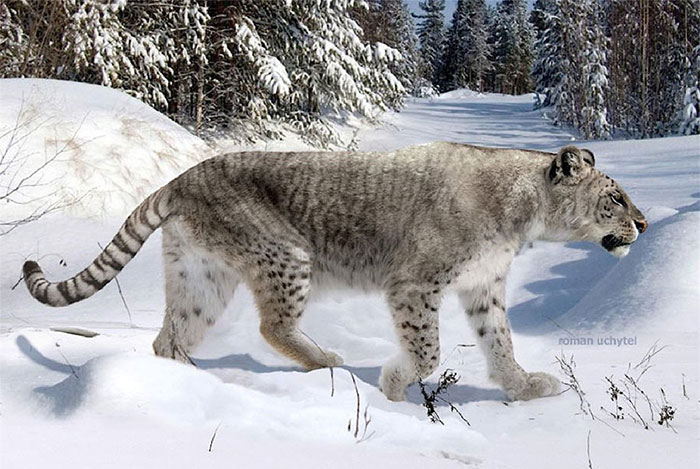
Panthera palaeosinensis – Ancient Chinese Tiger.
Since the beginning of the Pleistocene, ancient tigers from China appeared in various regions of China, such as Mianchi in Henan and Longdan in Gansu. Their body size was significantly smaller than that of modern tigers but similar to leopards. Generally, it is challenging for Panthera species of similar sizes to coexist within their habitats.
The expansion of the Gambazog leopard into East Asia was halted, leading it to bypass East Asia, traverse North Asia, and enter North America via the Bering Land Bridge at the end of the early Pleistocene (around 850,000 years ago). During this process, they gradually evolved into a new leopard species named Panthera onca augusta.
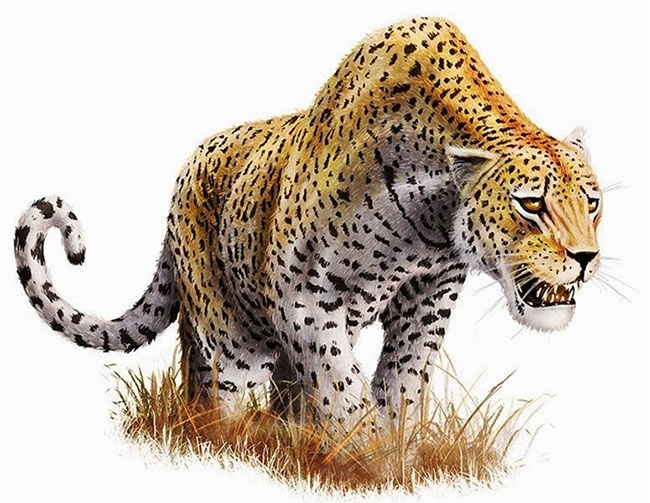
Restoration image of Panthera onca augusta.
The arrival of leopards in North America came at a very opportune time. Just shortly before, North America had undergone an extinction event, and the species Xenosmilus – which had long dominated North America and weighed 200 kg, had gone extinct. Meanwhile, other saber-toothed species had not yet evolved to replace Xenosmilus, with the strongest saber-toothed species in North America during this period being Smilodon gracilis, weighing only 70 to 100 kg.
The Augusta leopard weighed between 100 and 140 kg, surpassing its ancestor, the Gambazog leopard, in both weight and physique. Clearly, they also surpassed the saber-toothed subfamily physically, becoming the strongest feline in North America at that time, reaching the peak of feline power for the first time.
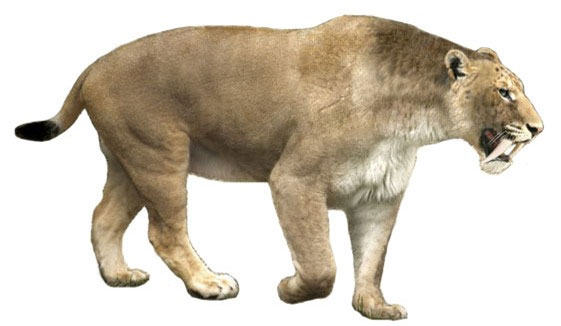
Smilodon gracilis.
Before and after the middle Pleistocene, the Augusta leopard invaded South America and evolved into the modern leopard species Panthera onca onca, becoming the ruler of the Amazon. To this day, the footprints of leopards have traversed all five continents, and their dynasty has entered its golden age.
Just as the development of the leopard dynasty, the evolution and advancement of subsequent species were inevitable, and this includes its younger generation, the lions.
From the evolutionary tree, leopards, lions, and jaguars all belong to the African big cat genus, but the divergence of leopards occurred earlier than that of lions and jaguars, with lions and jaguars being likened to the “nephews” of leopards.
In biology, there exists a rule that closely related species often share similar ecological habits; when they appear in the same area, competition for survival is inevitable. Lions, being the later arrivals, evolved from the African big cat branch, becoming the replacement and dethroning the leopard dynasty.
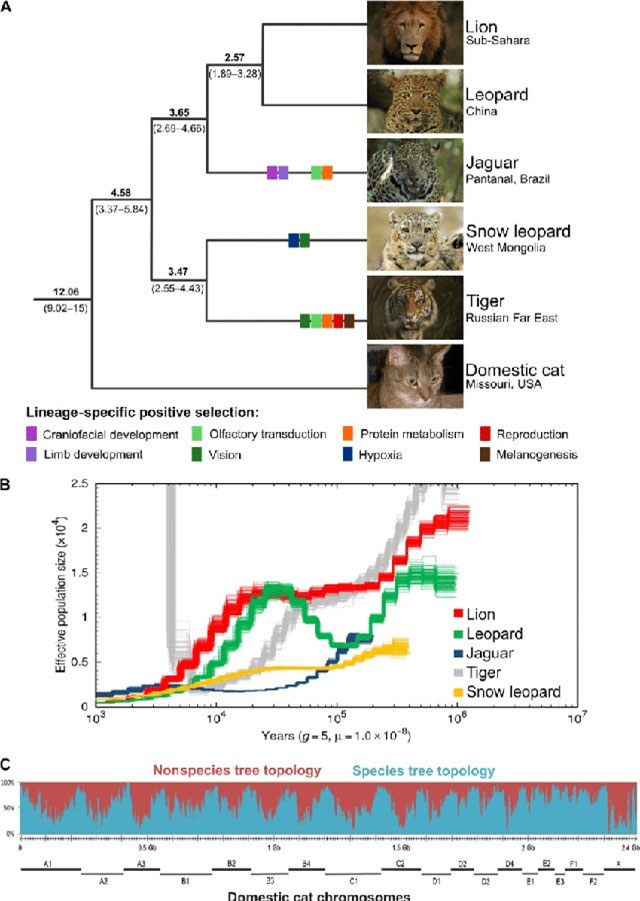
Contemporaneous with the earliest known fossils of modern leopards, the first lions also appeared in Tanzania, at which point lions had reached the size of modern lions, surpassing leopards in size upon their emergence. Subsequently, leopards disappeared from Africa, and lions continued to dominate Africa to this day.
Approximately 600,000 to 800,000 years ago, lions also departed from Africa and began their journey to conquer the world. They soon appeared in northern Eurasia and evolved into the cave lion, Panthera spelaea. This species was larger than modern lions, weighing between 300 and 400 kg, and may have been the largest big cat in history. After lions penetrated into Eurasia, they soon became the most common big cat in northern Eurasia, while the Gambazog leopard gradually declined and disappeared from the Old World around 300,000 to 400,000 years ago.
Skilled migration seems to be a family tradition in the line of African big cats, a capability inherited by lions from leopards. By the end of the middle Pleistocene, around 200,000 to 300,000 years ago, cave lions reached North America via the Bering Land Bridge and evolved into Panthera atrox, replacing the Augusta leopard and becoming the number one big cat in North America.
If we look into the history of lions and jaguars, we can see that the migratory paths of these two species are quite similar. Both originated from Africa and migrated to Eurasia, North America, and South America. Jaguars have always been the first to migrate, while lions follow closely behind, taking a similar route to the territories of the jaguars. As “descendants” of the jaguar, lions possess a larger body size and more advantageous adaptive traits, allowing them to hunt and kill jaguars in the areas they traverse to claim the top position.
By the end of the Pleistocene epoch, the lion dynasty entered its golden age, establishing a vast empire that spanned across all continents, while the territory of the jaguar dynasty had significantly shrunk, remaining only in the Americas.




















































